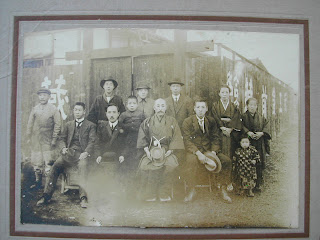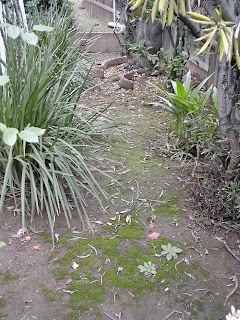The photo is from 1921. In the back of the photo, my grandmother wrote that a friend of her husband took the photo. She sent it to her birthplace and addressed probably to one of her relatives in Takasaki. The relative must be her big aunt who was running their silk dye business, and the friend was Ishii-san who was my grandfather’s best friend. My mother’s family just settled in Osaka, but they didn't stay there long.
My grandmother on left made all the clothes for her daughters. My mother said she was embarrassed when she went to Takasaki, Gumma prefecture. No children there wore western clothes then, she said. My aunt said opposite. She said she was proud because her clothes were unique, and she was the only one wearing such clothes. They had different points of view. So, they headed to different directions.
Nevertheless, my mother appreciated her mother’s talent. She said that once on the way home from school, a woman stopped her and asked from which department store she bought the clothes. She replied her mother made them. The woman didn’t believe her. She went home and told her mother about it. Her mother said the woman could have searched for a label. When my mother told me this story, I felt her respect and appreciation to her mother.
My aunt went to Meguro Doreme, the best or the only one dress-making school in Tokyo. All her clothes were her creations including heavy coats. My mother went to the house of a traditional kimono-making teacher and trained herself in making fine silk kimonos. It takes much experience to cut a fine silk roll. It isn’t only expensive but each unique design must match exactly at seams. It will be disastrous if she makes a slight mistake. Most of her kimono-making students made yukata (cotton kimono) only.
This kimono must be one of her graduating projects in kimono-making.









































